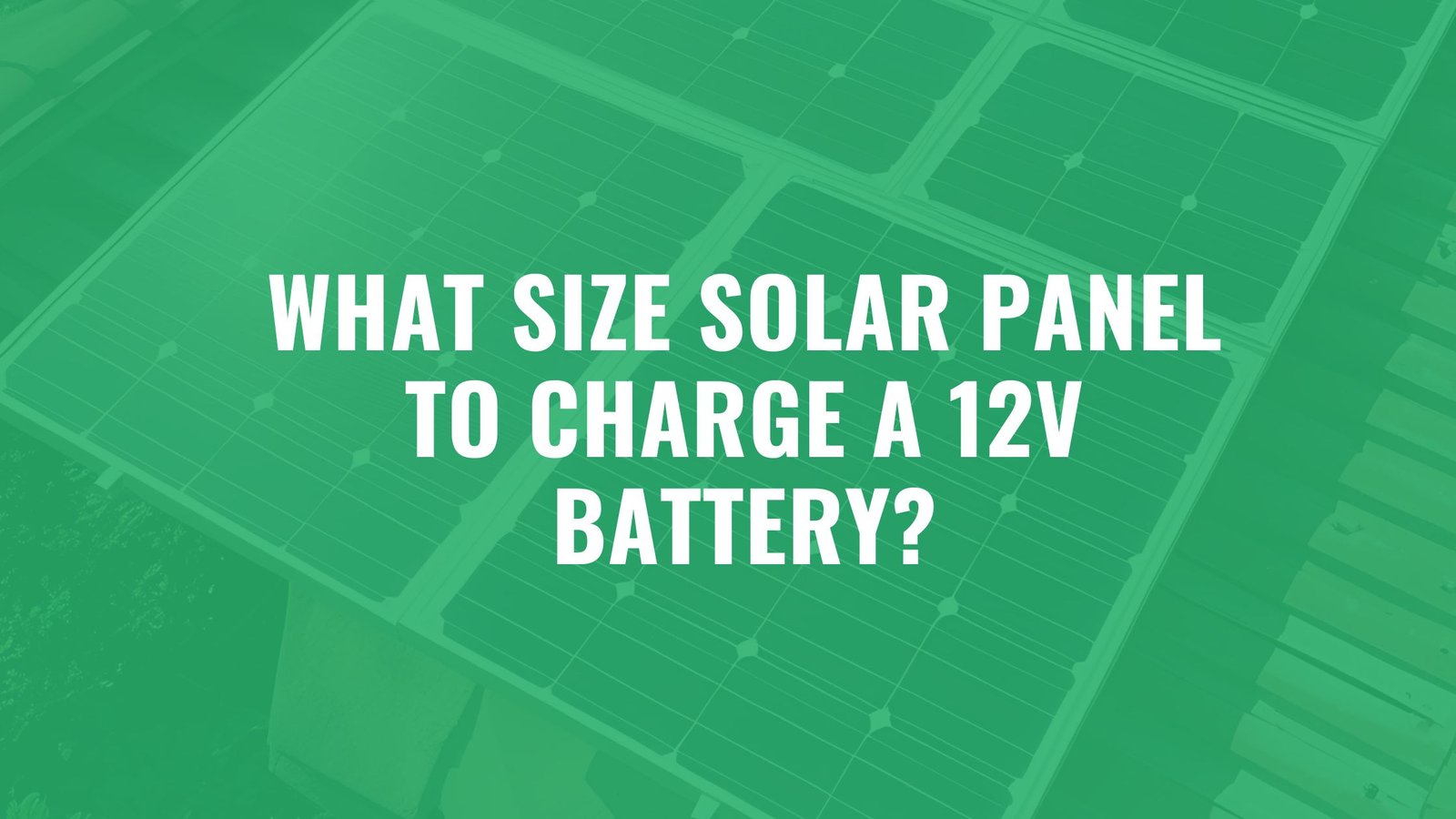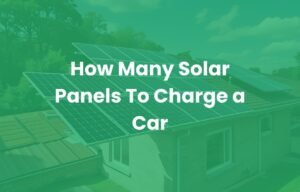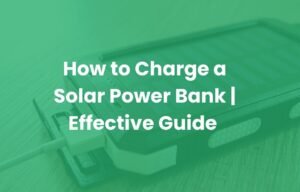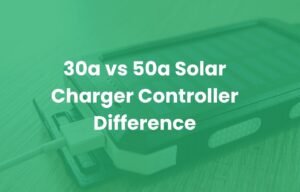Hearing most of the solar experts talking about dividing battery Ah by 10, and think that’s right. That’s completely wrong, yet most people still believe it is right. Knowing the perfect math will save your battery from dying prematurely, and who knows, maybe this is the main reason why your battery isn’t fully charged. According to the NERL data, the wrong-sized panels cause the failures of almost 70% of 12V batteries. In contrast, an oversized battery uses unnecessary wattage and costs over $ 100.
In this article, we will discuss what size solar panel you need to charge a 12V battery ?, common battery types that you can use with a 12V battery and cost-saving hacks.
Why You Need to Know This
Selecting the incorrect size solar panel has serious consequences for both the health of your system and your wallet, in addition to resulting in poor performance. The difference between a reliable, long-lasting power source and a frustrating, costly mistake depends on your understanding and the calculation.
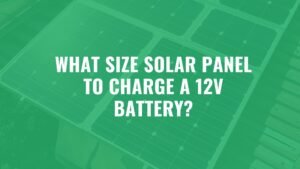
Table of Contents
ToggleWhat size solar panel to charge a 12V Battery?
Choosing the right panel size is very important for the health of your battery. This is the fundamental formula you should use to determine the panel size to choose.
The core formula is this:
Solar Panel Watts = (Battery Ah) x 15 / Peak Sun Hours
Let’s say you have a 1000Ah battery. Then
1000 x 0.15 = 15A. Now, that’s the current you needed.
Now, the sunlight thing—depends where you live. If you’re chilling in New York, you might get 4 solid hours of sun; in Arizona, you’re living on the sun, so maybe 7 hours.
Use this example to understand.
Suppose you live in NewYork and your battery Ah is 100. Then 15A / 4hrs as the peak sun hours in NY are 4 hours. The answer would be 3.75A. Multiply the answer by your battery voltage, which in this case is 12V. The answer would be 45W, and this is the power output you need.
The simple answer is that you need a solar panel with 45W power output to charge a 12V battery.
Solar Panel Sizes for Common 12V Batteries
A variety of solar panel sizes can be used with 12V batteries. Among the most common types are monocrystalline, polycrystalline, and flexible panels (ideal for RVs).
Monocrystalline (Best Efficiency)
The best efficiency is the popular thing about monocrystalline panels. They have a uniform black appearance and provide the best quality. They are expensive due to their complex manufacturing process. They are efficient than polycrystalline solar panels.
The low light conditions are best for optimal performance. You can use them in commercial buildings or restricted spaces.
Polycrystalline (Budget-Friendly)
The multicrystalline panels are another name for polyrystalline panels. The appearance of these panels is grainy and distinctive blue. The simple manufacturing process makes them budget-friendly.
They can handle different water conditions and are durable. They have eco-friendly energy as they consume less energy.
Flexible (Lightweight)
Flexible solar panels are composed of crystalline silicon cells or thin film. They are lightweight, thin, and can be bent. They are less durable and have low efficiency compared to rigid panels.
They are easy ot install and transport because of their lightweight. They are perfect for temporary setups or remote locations. They are best for situations where rigid panels are impractical.
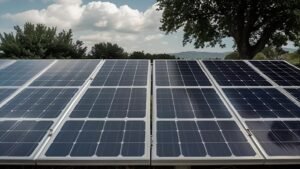
3 Critical Factors Most Guides Miss
1) Battery type matters
- Flooded Lead-Acid Batteries:
The flooded lead-acid batteries require a low charge current. They need regular monitoring of the water level because the water evaporates while charging. You need a maximum of 10A charge current if you have a 100Ah flooded battery. To control charge, instead of using a large panel, use a charge controller.
- Gel/Lithium Batteries:
The Gel/Lithium batteries can handle a high charge current. They don’t require regular maintenance as they are maintenance-free. The main difference is that you just have to make sure that your controller matches the battery specs. You don’t need an oversized panel.
2)Voltage drop
For your 12V battery, the voltage drop should be greater than 3% (0.36) for optimal efficiency. Your battery could be damaged or not be able to charge fully if the drop in voltage is less than 3%. Some people also aim for 1-2% for critical circuits.
- Correct Wiring Size:
Under 10 feet: If you have a small system, then a 14AWG is enough (<10)
Over 10 feet: Increase the wire size. You should choose the 10AWG if you have a 10A current over a 15-foot distance.
Pro Tip:
Calculate the current, voltage, and one-way length of the wire. Input the values into an online voltage drop calculator to determine the voltage drop you should target.
3) Charge controller
The capacity of your panel to charge your battery is greatly affected by the type of charge controller you use. The two types of controllers we will discuss below are Maximum Power Point Tracking (MPPT) and Pulse Width Modulation (PWM).
- PWM (Pulse Width Modulation)
You can think of it as light that you can turn on and off quickly. This controls the current flow between the battery and the solar panel. When you activate this controller, the panel works at the current voltage of the battery. As most batteries work at higher voltages, this is not very efficient.
Pro Tp:
If you are low on budget and have a simple system, then this is best for you.
- MPPT (Maximum Power Point Tracking)
An MPPT controller functions as an advanced “intelligent converter” or a gearbox for solar power. This controller finds the ideal maximum power point and operates the panel. It increases the current by converting the high voltage into a low voltage that the battery needs.
Pro Tip:
This works better in cold weather and cloudy or low-light conditions.
Cost-Saving Hacks
- Used Panels
Used commercial panels are available at affordable rates. Just make sure they continue to generate full power by testing them first with a multimeter.
- DIY Mounting
Stop buying an expensive mount. To maximise winter sun exposure, tilt your panel at an angle equal to your local latitude plus 15 degrees.
- Avoid Cheap Panels
Those tiny, extremely inexpensive panels you find online are frequently frauds. They are a waste of money because their actual power is typically far less than what the “10W” label indicates.
Conclusion
So, after all the calculations we have done, you need a solar panel that provides a 45W power output. If your battery is not 12V, then you can use the core formula to find out yours. Choose the battery type wisely and don’t forget the 3 critical factors. You can save a lot of money by using the cost-saving hacks.

